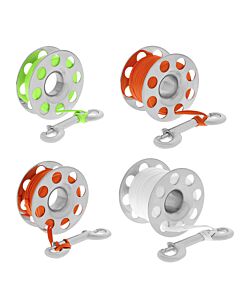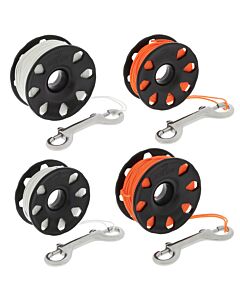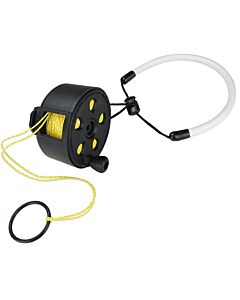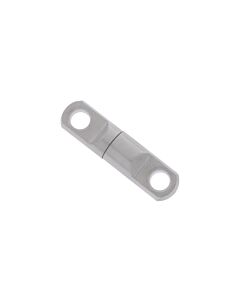Spools
-
 DGX Custom - DGX Gears Polycarbonate Finger SpoolsStarting at $14.95
DGX Custom - DGX Gears Polycarbonate Finger SpoolsStarting at $14.95 -
 DGX Custom - DGX Gears Stainless Steel Finger SpoolsStarting at $34.95
DGX Custom - DGX Gears Stainless Steel Finger SpoolsStarting at $34.95 -
 DGX Gears Aluminum Finger SpoolsStarting at $39.95
DGX Gears Aluminum Finger SpoolsStarting at $39.95 -
 Dive Rite POM Finger SpoolsStarting at $20.00
Dive Rite POM Finger SpoolsStarting at $20.00 -
 Dive Rite Cookie Spool$14.00
Dive Rite Cookie Spool$14.00 -
 AP Diving Ratchet Pocket Reel$109.00
AP Diving Ratchet Pocket Reel$109.00 -
 Apeks Lifeline Finger SpoolsStarting at $109.00
Apeks Lifeline Finger SpoolsStarting at $109.00 -
 Apeks Lifeline Halo Spool$169.00
Apeks Lifeline Halo Spool$169.00 -
 Line Swivel$2.50
Line Swivel$2.50
Finger Spools Are Not Reels
The skills required to deploy a finger spool are different than those required to use a typical reel. At first glance the simple spool looks easier, but compared to reels the finger spool requires different specific techniques for successful use. If this is your first finger spool then seek advice, get a demonstration, and most importantly you should practice under controlled conditions.
A common usage mistake is rewinding a finger spool in a manner that applies a lot of tension to the line, such as when hanging under a surface marking buoy or lift bag, causing the line to be very tightly wound on to the spool. Upon re-use the line doesn't smoothly unwind and sticks, causing the entire spool to be jerked out of the fingers or disappear with the buoy or bag. Another consideration is the method used to rewind the line on to the spool. Hold the line loosely and use the spool to take up the line; if you hold the spool in a fixed position some wrapping motions with your hand will put a 'twist' in the line with each wrap around the spool. Depending on how you later unspool, you might wind up with a tangled mess of line (aka 'birds nest') if you hold the line in your hand while it unspools.
Although your finger spool is not a reel the basic care is very similar, you should rinse your finger spool with fresh water following each dive. We recommend pulling some or all of the line off the spool before each dive, then rewinding it neatly but not too tightly, so as to help prevent problems during line deployment. If the line on your finger spool is new or very dry, we recommend pulling the line off into a bucket of water, especially if the line is nylon. This will moisten the line, precluding it from swelling on the spool and causing further issues or damaging the spool. Finally, overloaded spools are common and too much line will cause tangles during initial deployment. If you are having a problem, try removing some excess if your finger spool has been overloaded.

